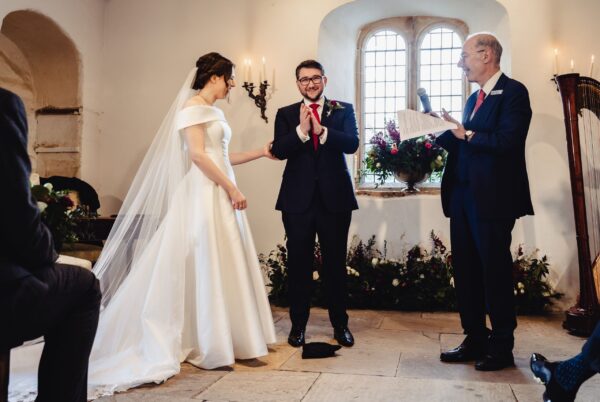People are often quite curious about my work. One of the questions I sometimes get asked is “What is a celebrant’s typical day like?”
The first answer is that there isn’t a “typical” day, really. One of the beauties of the work that I do is that there’s a lot of variety. That’s standard.
Like anybody else, I have to read emails, answer irrelevant phone calls, keep accounts, dress appropriately when seeing clients, and so on, but we’ll take all these for granted.
Preparations
Depending on my diary, I can expect to be talking to a wedding couple – or to a funeral family – for an hour or so. Obviously, if it is face-to-face, travel has to be factored in.
Another major time-filler is writing the ceremony. Unlike some talented celebrants, I rarely compose my own words, but prefer to read widely and choose appropriate texts. These people can write better than me, so why not use them?!
Weddings
“Typical” will also depend on whether we are talking about a weekday or a weekend. If it’s a weekend wedding, then I’m off in good time, aiming to arrive an hour before the ceremony is due to start.
I will make contact with the couple (the groom, at least, as the bride may well not be on the premises) and any event planner. I will check that the venue is correctly set up, and sort out any discrepancies. I lay out what I need (could be handfasting ribbon, unity candle, quaich, or whatever. I usually liaise with photographers, florists and caterers.
I will make sure the groom is reasonably calm. I’ll also check he has the rings and, in general, knows what is expected of him.
Once the bride arrives, it’s down to me to conduct the ceremony. This may last between 25 minutes and an hour.
After the ceremony, although I may be asked to stay for photos, I am usually free to go home. I will never arrange two weddings in one day (potential for delays is too great!), so that should be the end of my day’s work.
Funerals
A “typical” funeral will take place at my local crematorium, about 5 miles away. So I normally leave an hour before the official start time, and sit in the car park until about 20 minutes before the start.
Then, I seek out the attendant and check the right music has been cued up. I leave him (it is normally a “he”) a copy of my “script”, just in case. We also agree on a photo to be projected on to the screen for the service. We try and make it as relevant to the deceased as possible.
Next up is to find the family and check all is in order and they know what will be happening over the next half hour or so.
When the Funeral Director arrives, we liaise and start as soon as possible. Again, this is down to me to lead (and direct if there are any participants involved).
Once the service ends, I go out with the family to the terrace and wait around for a while, in case anybody wants to speak to me.
I am sometimes invited back to the reception, but I don’t usually have the time, although I do sometimes drop in briefly.
So, as far as “typical” goes, I hope that gives a flavour of it!
Photo: Jamie Dodd

